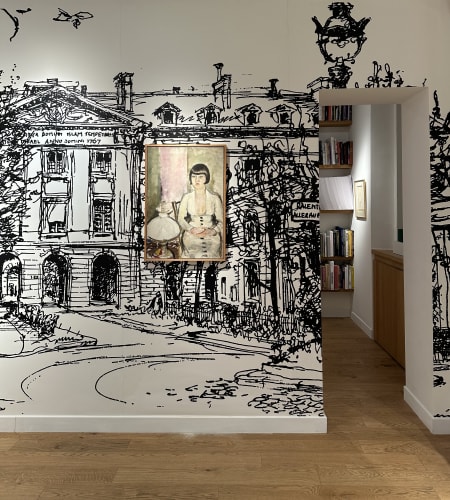From February 1 to March 23, 2024, Galerie Raphael Durazzo presents Irène Zurkinden Parisienne, the first monographic exhibition devoted to the avant-garde Swiss painter Irène Zurkinden (1909–1987).
The exhibition brings together a selection of paintings and works on paper, covering Zurkinden’s groundbreaking artistic practice during her years in Paris in the 1930s.
Irène Zurkinden was born in 1909 in Basel, Switzerland. She began her studies at the very traditional Basel School of Arts, where her teachers, though respected artists, remained on the fringes of the emerging avant-garde movements. In 1929, she received a scholarship that allowed her to move to Paris and enroll at the Académie de la Grande Chaumière. There, she immersed herself in the surrealist circle, notably alongside her childhood friend Meret Oppenheim, with whom she shared an apartment. It was also in Paris, in 1934, that she met the mixed-race German-Brazilian jazz musician Kurt Fenster, with whom she lived between Basel and Paris until her permanent return to Switzerland in 1942. Upon returning, Zurkinden joined the anti-fascist artist collective Gruppe 33, participating in several of their exhibitions.
Gradually breaking away from the academic style of her early training, Zurkinden continued to develop her impressionist-inspired approach without ever fully abandoning it. This artistic stance placed her at odds both with the conservative circles in which she was trained and with the successive avant-garde movements she engaged with—never fully adhering to any of them. The self-portrait featured in the exhibition is one of the earliest examples of her desire to capture fleeting moments and movement. Her depictions of urban landscapes and deconstructed portraits anticipate the visual explorations of artists like Cecily Brown and George Condo. Particularly striking are the portraits of her female companions, whom she painted nude as early as the 1930s, in intimate, languid poses—works that mark her as a forerunner of many contemporary women artists. For these artists, as for Zurkinden, the depiction of the female body by a female artist represents both a form of emancipation and the assertion of an aesthetic voice wholly independent from that of their male counterparts.
Throughout her life, Irène Zurkinden lived in a constant tension between familial responsibilities and her work as an artist.

